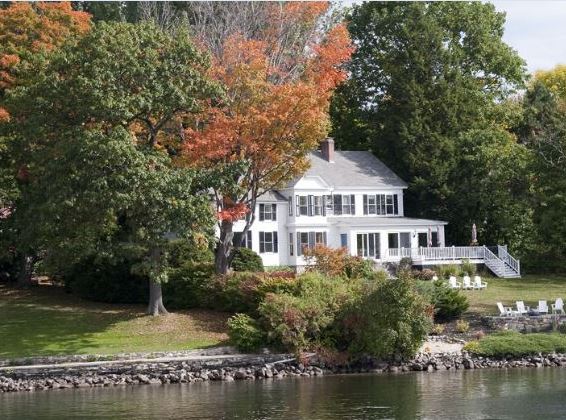
That depends on the value of your home, the amount of water damage and whether you have a flood insurance policy.
Regular home insurance doesn’t cover flooding. You’ll need a policy offered through the government’s National Flood Insurance Program — but note that those top out at $350,000 in coverage for your home and its contents. For higher amounts, you may need supplemental coverage to protect your savings from taking a hit.
People tend to associate floods with a total loss, but the average flood claim for U.S. homeowners is about $39,000, according to the flood insurance program.
Here are six other persistent myths about flood insurance — and the truths you need to know.
1. To get a policy, you must live in a flood plain
Not true. If you live in a flood plain, your mortgage company will likely require you to buy flood insurance. But you can purchase it even if you don’t live within a flood zone.
Almost anybody can get flood insurance who wants flood insurance. In fact, 1 in 4 flood claims is for a home not in a flood plain.
The price through the federal flood insurance program is based on standardized rates and depends on the home’s value and whether or not it’s in a flood plain.
The average price for flood insurance is about $660 annually. Your insurance broker can help you buy a policy and may accept payment by credit card.
2. Flood insurance is just for high-risk areas
All homeowners — even those who do not live in designated flood plains — weigh the dangers and their options and seriously consider buying flood insurance.
3. Flood insurance covers everything
Not necessarily. When it comes to the physical structure of your house, federal flood insurance policies top out at $250,000. If you have a $300,000 house that’s a total loss because of a flood, the most you can recoup through the program is $250,000 to cover the structure itself.
For your personal possessions, the cap is $100,000 under the federal program.
If you already have insurance through the federal program, then you can buy “excess flood insurance” through a private carrier that would cover claims above the national limits. In essence, it’s a flood policy with a $250,000 deductible.
Note that flood insurance doesn’t cover living expenses if you have to relocate while your home is being repaired.
4. My homeowners policy covers floods
Unfortunately, a lot of folks may be under the impression that their standard homeowners policy might cover flood damage. But the standard policy doesn’t. The typical home insurance policy doesn’t cover earthquakes or floods. So a homeowner wanting coverage for either of those disasters will need to pick up separate, specific coverage against those types of disasters.
If you want flood insurance, it pays to think ahead. There is a 30-day waiting period between when you buy the coverage and when it kicks in. When a hurricane is bearing down on your area, it’s too late to get a flood policy.
5. Water damage is water damage
When it comes to your insurance, not all water damage is the same.
If there’s a storm and your roof comes off and water comes through, that would be covered under your homeowners policy. Versus a flood situation where the riverbank overflows and you look out of the front of your house and you need a boat to get from point A to point B.
Most consumers have a pretty good understanding of how to draw the line between storm damage and flood damage.
Some homeowners policies offer an optional water-backup endorsement that covers damage from water backing up into your home from causes such as a broken sump pump.
6. Flood maps don’t change
Flood plains (and flood plain maps) change and evolve. Just because you weren’t in a flood plain when you bought your home a few years ago doesn’t mean you’re not in one now.
There are a couple of ways you can find out about your flood risks.
FloodSmart.gov: This site will allow you to put in your address and see if it’s in a flood plain, and give you information on risks, premiums and agents. But use it as one tool, not the final word on whether your home is in a flood plain.
Your insurance agent. When it comes to researching whether your home is in a flood plain, you definitely want someone knowledgeable to research the question for you. And, you might want to get a second opinion from a different agent.
Insurance agents have different levels of sophistication with regard to this product. You get a different answer sometimes. So call an insurance broker who can make a couple of checks to make sure you’re protecting yourself.
For more information on flood insurance, contact Lallis & Higgins Insurance.
bankrate.com

